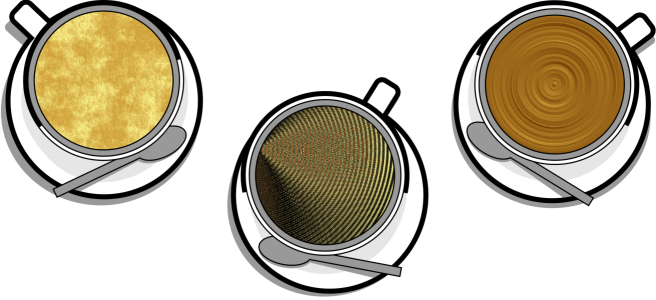
Introduction: CorelDRAW, a premier vector graphics editor, stands as a canvas where designers weave visual stories with a rich tapestry of elements. Among its diverse features, the integration of texture fills adds depth, character, and a tactile dimension to designs. In this extensive guide, we embark on a comprehensive exploration of texture fills in CorelDRAW, unraveling the techniques, applications, and creative possibilities that elevate design to new heights.
I. Understanding Texture Fills: Texture fills in CorelDRAW involve the application of realistic, tactile surfaces to shapes or objects, enhancing visual interest and creating a sense of depth within a design. The inclusion of textures provides designers with a versatile tool for adding a touch of realism or stylized effects to their compositions.
A. Visual Depth and Realism:
- Mimicking Real-world Surfaces: Texture fills allow designers to mimic the appearance of real-world surfaces, from the grain of wood to the roughness of stone. This adds a layer of realism that enhances the overall visual impact of the design.
- Creating Depth and Dimension: By incorporating textures, designers introduce an illusion of depth and dimension within two-dimensional designs. This depth contributes to a more immersive and visually engaging experience for the viewer.
B. Stylized and Artistic Effects:
- Expressive Design Elements: Texture fills offer a wide range of possibilities for expressing artistic intent. Whether designers aim for a weathered, vintage look or a sleek, modern feel, textures serve as versatile design elements that contribute to the overall aesthetic.
- Customization for Unique Styles: CorelDRAW’s texture fills can be customized, enabling designers to create unique styles that align with their creative vision. The ability to tailor textures to specific projects allows for a broad spectrum of artistic expression.
II. Basic Techniques for Applying Texture Fills: CorelDRAW simplifies the application of texture fills with user-friendly tools and functionalities. Understanding the basic techniques ensures designers can seamlessly integrate textures into their designs.
A. Texture Fill Tool:
- Central Hub for Textures: The Texture Fill tool in CorelDRAW serves as the central hub for applying texture fills. By selecting a shape and activating the Texture Fill tool, designers can choose from a library of predefined textures or import custom images to be used as textures.
- Scale and Position Adjustments: Designers can adjust the scale, rotation, and position of textures within shapes using the Texture Fill tool. This flexibility ensures that textures adapt seamlessly to the size and orientation of the selected shapes.
B. Interactive Adjustments:
- Real-time Modifications: CorelDRAW allows designers to make real-time modifications to texture fills, providing instant feedback as adjustments are made. By dragging control points, designers can experiment with the texture’s scale, rotation, and position, fostering an interactive and dynamic design process.
III. Advanced Techniques for Texture Fills: To unlock the full potential of texture fills, designers can explore advanced techniques within CorelDRAW that offer nuanced control and artistic expression.
A. Blending Modes and Opacity:
- Customizing Blending Effects: CorelDRAW introduces blending modes for texture fills, allowing designers to customize how textures interact with underlying shapes or objects. This advanced technique enhances the visual impact by introducing subtle variations in color and transparency.
- Opacity Adjustments: Texture fills support opacity adjustments, enabling designers to control the transparency of textures within shapes. This feature allows for the creation of subtle effects or overlays, contributing to the overall complexity of the design.
B. Texture Mapping for Realism:
- 3D Effects: CorelDRAW introduces texture mapping as an advanced technique for texture fills. By applying textures to 3D objects, designers can achieve realistic effects, enhancing the visual appeal and making designs more dynamic.
IV. Texture Fills in Complex Designs: Designing intricate or complex projects may pose challenges when applying texture fills. CorelDRAW addresses these challenges with features that ensure precision and control in diverse design scenarios.
A. PowerTRACE for Custom Textures:
- Vectorization of Custom Textures: PowerTRACE, an advanced feature in CorelDRAW, facilitates the vectorization of custom textures. This allows designers to create intricate textures, ensuring that the details are preserved and enabling seamless application within complex designs.
B. Contour Tool for Precision:
- Enhancing Shape Outlines: The Contour tool in CorelDRAW empowers designers to create precise outlines around shapes with texture fills. By adjusting contour properties, designers can enhance the edges of textured shapes, ensuring a polished appearance, especially in designs with intricate details.
V. Challenges and Solutions: As designers delve into the realm of texture fills, challenges may arise. Strategic solutions ensure a smooth integration of this technique into various design contexts, preserving both visual appeal and efficiency in the workflow.
A. Color Consistency Across Documents:
- Global Texture Fill Styles: Maintaining color consistency in texture fills across multiple documents can be achieved through CorelDRAW’s Global Texture Fill Styles. Designers can create and manage global styles, ensuring uniformity and efficiency in design workflows.
B. Collaboration and File Sharing:
- Exporting and Importing Styles: Collaborative projects often involve sharing texture fill styles between team members. CorelDRAW’s export and import functionalities for texture fill styles facilitate seamless collaboration, allowing designers to share and reuse textures effortlessly.
VI. Conclusion: Texture fills in CorelDRAW transcend the boundaries of flat design, adding a tactile dimension that elevates visual storytelling. The software becomes not just a platform but a playground where designers experiment with the interplay of textures to create captivating and immersive compositions. The journey of mastering texture fills is an exploration of depth, texture, and the language of design. CorelDRAW stands as a reliable companion, offering a palette of tools that empowers designers to transform concepts into textured masterpieces, where each contour, each hue, and each texture choice contributes to the visual narrative. Texture fills become the brushstrokes of a digital canvas, making CorelDRAW an essential ally in the ever-evolving landscape of graphic design.